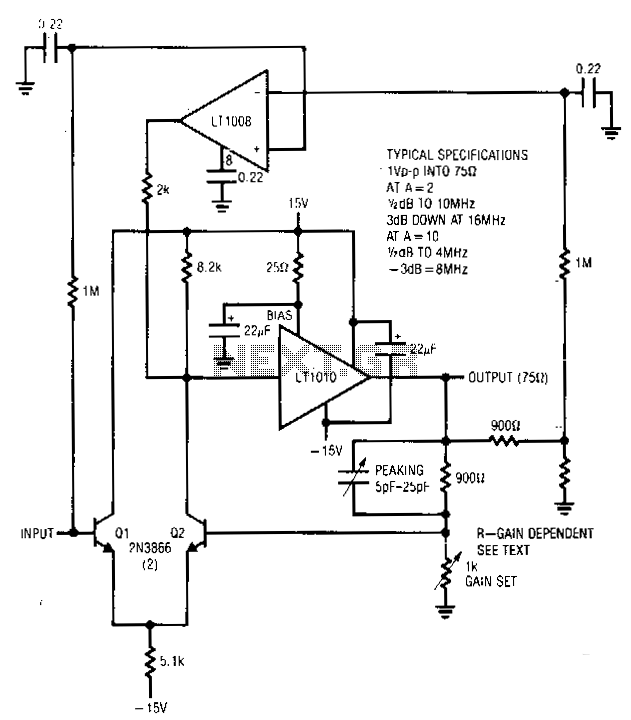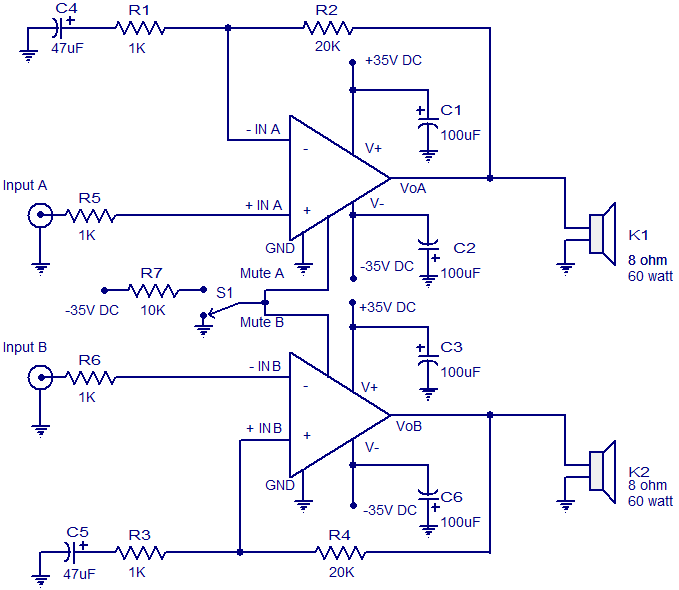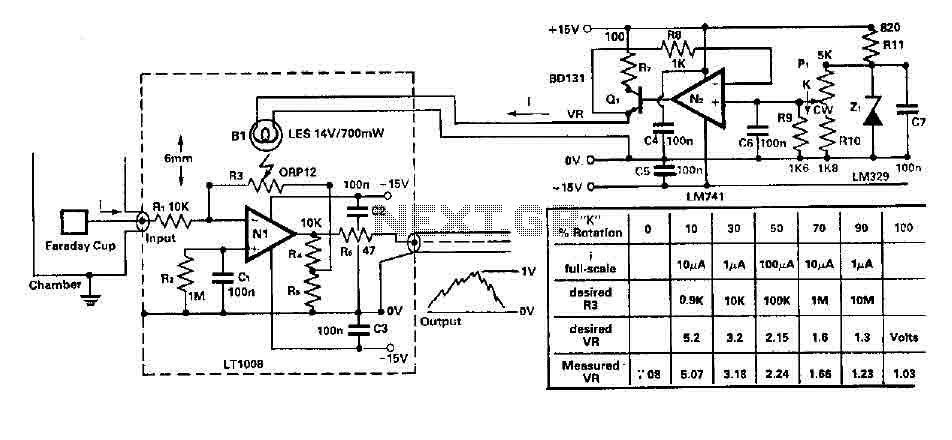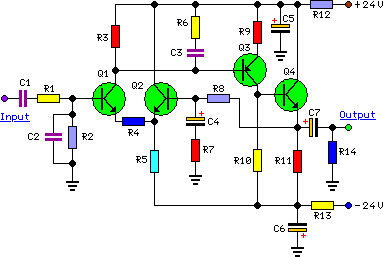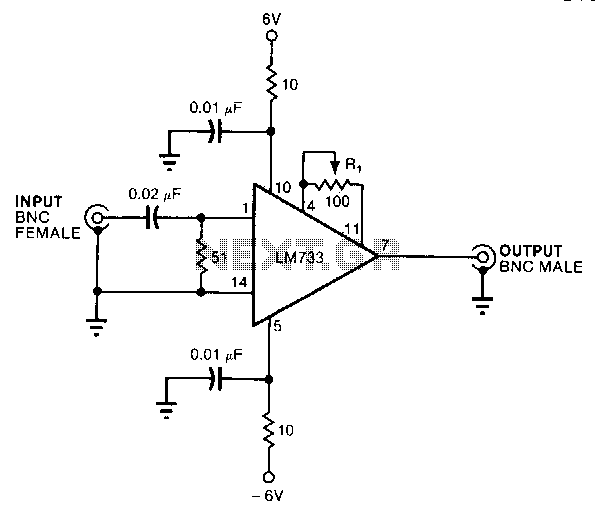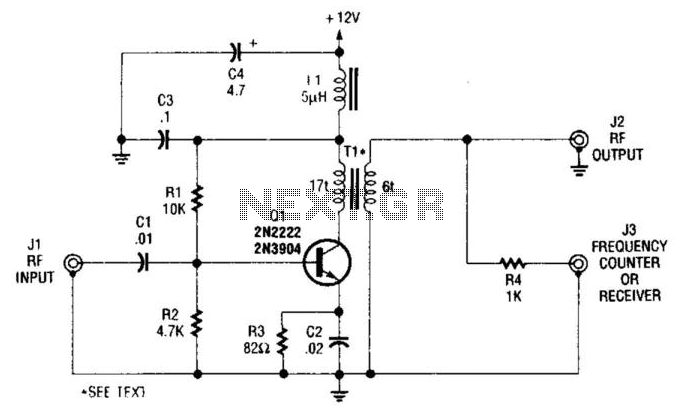
15 Watt Amplifier
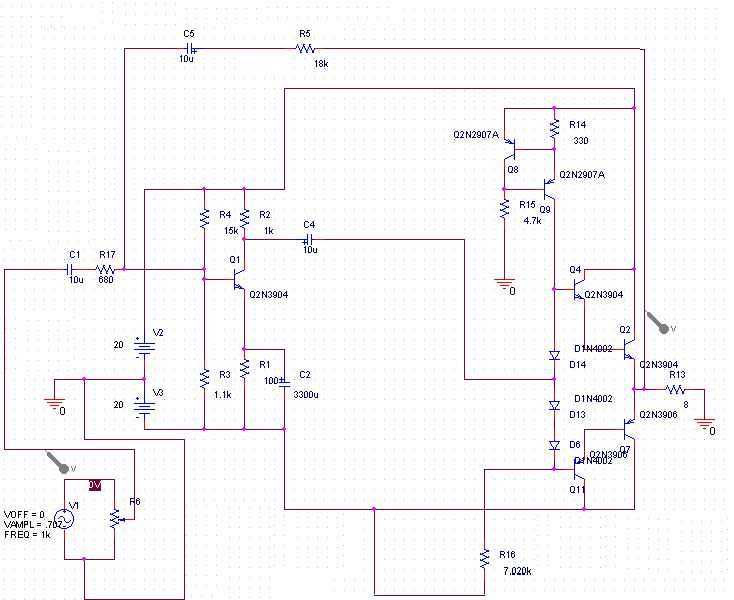
A 15 watt amplifier made using discrete components. Sergio designed this circuit for his Electronics Level II course. More: This amplifier uses a dual 20 Volt power supply and delivers 15 watts RMS into an 8 ohm load. Q1 operates in common emitter, the input signal being passed to the bias chain consisting of Q8, Q9, D6, D13 and D14. Q8 and Q9 provide a constant current through.
This 15-watt amplifier circuit is constructed using discrete components, which allows for greater flexibility in design and optimization compared to integrated circuits. The amplifier is powered by a dual 20-volt power supply, which provides the necessary voltage headroom for efficient operation and ensures that the amplifier can deliver up to 15 watts RMS into an 8-ohm load, making it suitable for driving speakers in various audio applications.
The core of the amplifier is a common emitter configuration utilizing transistor Q1. This configuration is known for its ability to provide significant voltage gain, which is essential for amplifying weak audio signals. The input signal is fed into the base of Q1, where it is amplified before being sent to the output stage. The biasing of Q1 is critical for its operation, and this is managed by a bias chain that includes transistors Q8 and Q9, as well as diodes D6, D13, and D14.
Transistors Q8 and Q9 are configured to provide a constant current source, which stabilizes the operating point of Q1 across varying load conditions and temperature fluctuations. This constant current configuration helps to minimize distortion and improve linearity in the amplifier's performance. The diodes in the bias chain serve to provide temperature compensation, ensuring that the bias point remains stable even as the circuit heats up during operation.
The output stage of the amplifier is designed to drive an 8-ohm load effectively, delivering the specified 15 watts RMS. The choice of components, including the transistors and diodes, should be made with consideration of their thermal characteristics and power ratings to ensure reliable operation under maximum load conditions.
Overall, this amplifier design exemplifies a practical application of discrete component circuitry in audio amplification, showcasing the principles of transistor operation, biasing techniques, and thermal management in electronic circuit design.A 15 watt amplifier made using discrete components. Sergio designed this circuit for his Electronics Level II course. This amplifier uses a dual 20 Volt power supply and delivers 15 watts RMS into an 8 ohm load. Q1 operates in common emitter, the input signal being passed to the bias chain consisting of Q8, Q9, D6, D13 and D14. Q8 and Q9 provide a constant current throug 🔗 External reference
This 15-watt amplifier circuit is constructed using discrete components, which allows for greater flexibility in design and optimization compared to integrated circuits. The amplifier is powered by a dual 20-volt power supply, which provides the necessary voltage headroom for efficient operation and ensures that the amplifier can deliver up to 15 watts RMS into an 8-ohm load, making it suitable for driving speakers in various audio applications.
The core of the amplifier is a common emitter configuration utilizing transistor Q1. This configuration is known for its ability to provide significant voltage gain, which is essential for amplifying weak audio signals. The input signal is fed into the base of Q1, where it is amplified before being sent to the output stage. The biasing of Q1 is critical for its operation, and this is managed by a bias chain that includes transistors Q8 and Q9, as well as diodes D6, D13, and D14.
Transistors Q8 and Q9 are configured to provide a constant current source, which stabilizes the operating point of Q1 across varying load conditions and temperature fluctuations. This constant current configuration helps to minimize distortion and improve linearity in the amplifier's performance. The diodes in the bias chain serve to provide temperature compensation, ensuring that the bias point remains stable even as the circuit heats up during operation.
The output stage of the amplifier is designed to drive an 8-ohm load effectively, delivering the specified 15 watts RMS. The choice of components, including the transistors and diodes, should be made with consideration of their thermal characteristics and power ratings to ensure reliable operation under maximum load conditions.
Overall, this amplifier design exemplifies a practical application of discrete component circuitry in audio amplification, showcasing the principles of transistor operation, biasing techniques, and thermal management in electronic circuit design.A 15 watt amplifier made using discrete components. Sergio designed this circuit for his Electronics Level II course. This amplifier uses a dual 20 Volt power supply and delivers 15 watts RMS into an 8 ohm load. Q1 operates in common emitter, the input signal being passed to the bias chain consisting of Q8, Q9, D6, D13 and D14. Q8 and Q9 provide a constant current throug 🔗 External reference
